The Norse explorer Leif Erikson travelled to Newfoundland hundreds of years before Christopher Columbus ‘discovered' North America.
Leif Erikson (or however you choose to spell it – see note at the end!) is one of the most famous Norse figures in North America. His legacy lives on through many statues and even a day in his honour.
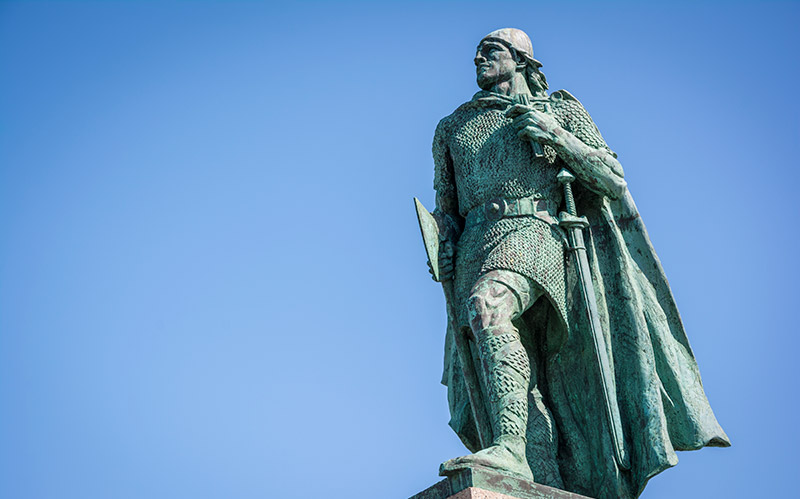
Grab a cup of coffee as we take a look back at his story…
We can never know for sure who was the first European to set foot in North America, but one thing is certain… it was definitely not Christopher Columbus!
Columbus and Cabot
Everyone knows from their history lessons that in fourteen hundred and ninety-two Columbus sailed the ocean blue.
Over four voyages he ‘discovered’ much of the Caribbean, and the North and East coasts of South and Central America, in his quest to find a Northern passage to the spice-rich East Indies. Columbus, however, never set foot in what is now North America.
A few years later, in 1497, the venetian explorer Zuan Chabotto – John Cabot to the rest of us – set out under the auspices of King Henry VII of England and landed in what we now call Newfoundland.
So, was Cabot the first European to set foot in North America? No. Not even close!
That honour is claimed most strongly by a plucky Norse explorer named Leif Erikson who landed there almost 500 years before.
His early life
Leif Erikson was the middle son of Erik the Red, the founder of the Norse settlement in Greenland and his wife Thjodhild.
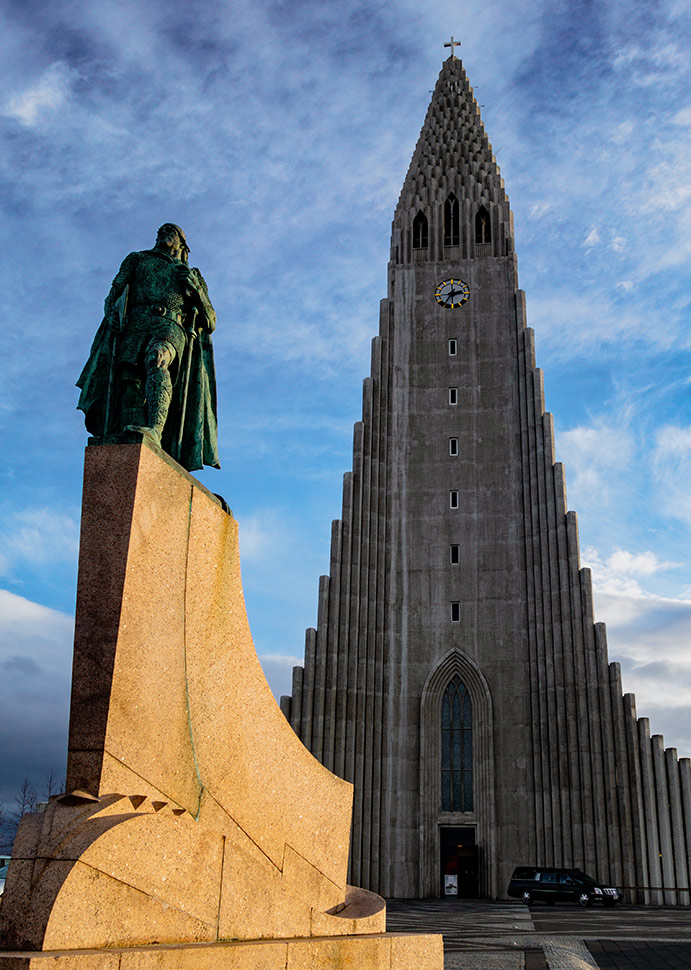
We don’t know exactly when and where he was born but it’s believed to have been around 970CE in the recently-colonised Iceland.
Leif’s grandfather, Thorvald Asvaldsson, had been banished from Norway for manslaughter – fairly common in those days – and lived in exile in Iceland with his son Erik.
When Erik himself was exiled from Iceland, for killing Eyiolf the Foul, he set out West with his family and became the first permanent settler on Greenland.
In 999CE, Leif and his crew set out from Greenland to visit Norway. Following a summer in the Hebrides after being blown off course, they eventually arrived in Norway and Leif became a member of King Olaf’s official entourage.
He converted to Christianity and was tasked with introducing the religion to Greenland, which he started upon his return.
Searching for Vinland
According to the Saga of the Greenlanders, Leif heard the tale of Bjarni Herjolfsson an explorer who, on attempting to find Greenland for the first time with his crew, was blown off course and sighted hospitable-looking land, with mountains, hills and forests, to the west.
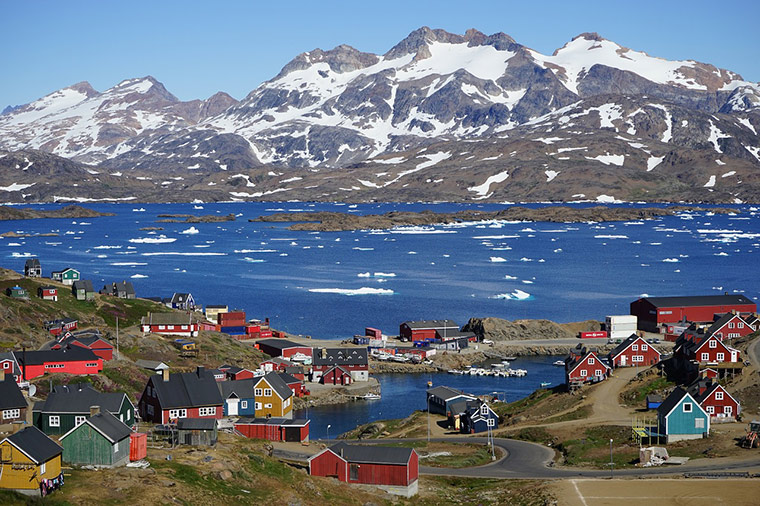
Anxious to get to Greenland to see his family there, Bjarni refuses to investigate and simply relays mention of the land to the West and was chided by King Eric for not investigating further.
It could well have been the lack of timber that piqued Leif’s interest enough that he bought Bjarni’s ship and raised a crew of 35 and set out to discover the verdant land of the Americas.
Leif and his crew set sail from Greenland to try to find the place discovered by Bjarni. They first encountered a land of ice and stone, which they called Helluland – Land of the Flat Stones – now widely believed to be Baffin Island. Seeing little there of interest they continued on.
Their next stop was a forested land with white shores which they named Markland, meaning Wood Land. This is thought to be somewhere on the Labrador coast of modern-day Canada.
Again, this did not fit the description of Bjarni’s rich and fertile discovery and so once more they carried on.
Success at last
After another couple of days of sailing south-west, they finally encountered a place that seemed like the place they were searching for.
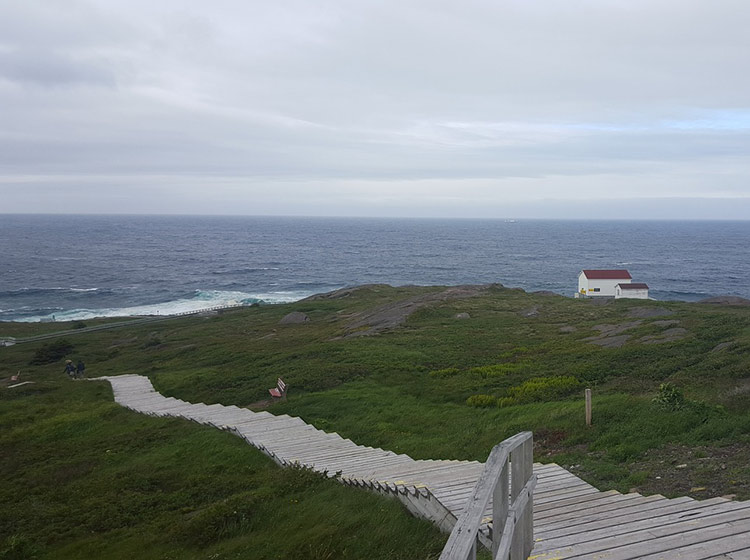
They landed at a headland, with an Island offshore, and a pool accessible to ships at high tide in an area with shallow sea and sandbanks.
They established a camp and explored the land, finding great forests for timber, wild wheat growing abundantly, and huge vines of grapes.
Leif called the area Vinland (Vine Land) and he and his crew remained there until the spring. They then set sail back to Greenland, loaded with timber, wheat and grapes for their people at home.
On the way home, the saga tells of them seeing a shipwreck and rescuing two sailors trapped there.
It’s not clear where this was, whether it was on the mainland or an island, and so it’s possible that Leif Erikson was not actually the first European to set foot in North America either!
Modern Vinland
It’s difficult to pinpoint exactly where Leif and his crew visited. Helluland’s description fits Baffin Island perfectly, but Markland could have been almost anywhere along the Labrador Coast.
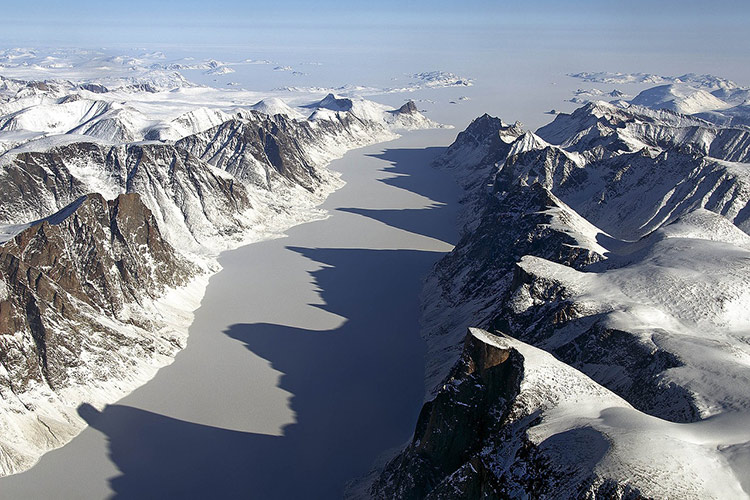
Leif’s settlement in Vinland, however, is most commonly believed to be L’Anse aux Meadows – the only known Norse archaeological site in North America. The site was added to the UNESCO World Heritage List in 1978.
L’Anse aux Meadows is a site consisting of eight buildings – dwellings or workshops – on the northernmost tip of Newfoundland. The excavated remains of wood-framed peat-turf buildings are similar to those found in Norse Greenland and Iceland.
The lack of burial sites and tools suggests that it was not a long-lived settlement but rather could have been a camp set up as a boat-repair facility.
The presence of certain food items, such as butternuts, suggest that those who inhabited the settlement must have travelled further south, at least as far as New Brunswick.
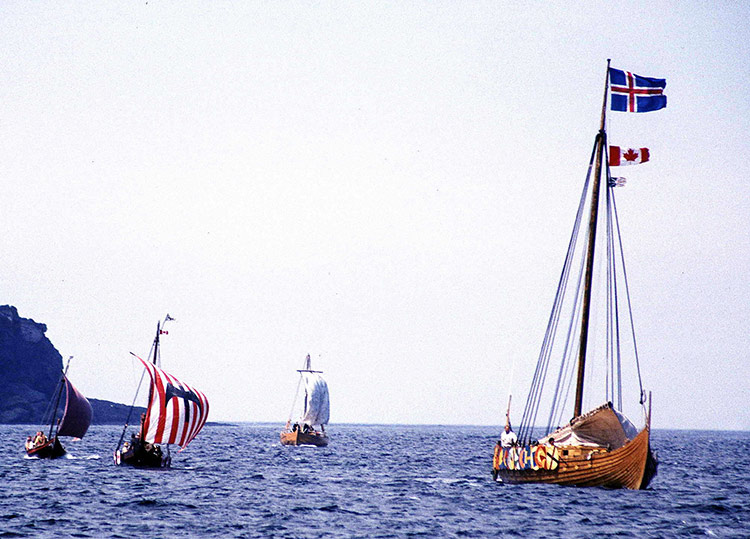
It’s also possible that Vinland refers not simply to one place but the whole country, or at least a region of it.
Many scholars disagree with the possibility that vines were growing grapes in Newfoundland as the temperatures would not have been high enough.
The legacy of Leif Erikson
The first statue of Leif Erikson was erected in Boston in 1887 and a replica was erected in Milwaukee.
In 1925 at the Minnesota State Fair, President Calvin Coolidge marked the centenary of the first official immigration of Norwegians to America by declaring that Leif Erikson had indeed been the first European to discover America.
As the first immigration boat arrived on October 9th 1825, and Leif’s voyage was known to have taken place ‘in the fall’, October 9th was settled upon as the day to commemorate both events for Norwegian Americans.
In 1929 the Wisconsin Legislature passed a bill to declare it Leif Erikson Day and in 1964 the US Congress authorised and requested the President to proclaim each year that October 9th be Leif Erikson day.
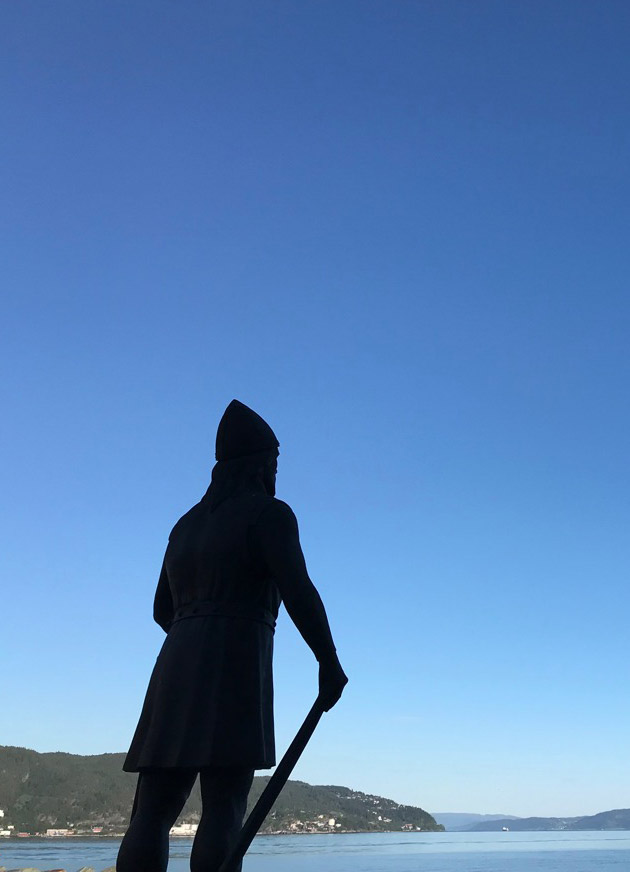
In connection with the World Exhibition in Seattle in 1962, a five-metre-high monument to Leif was erected. A smaller version was donated to Trondheim in connection for the city millennium in 1997, and stands by the modern Pirsenteret development watching cruise ships arrive.
Whether you believe North America was first encountered by Leif Erikson, Bjarni Herjolfsson or the two random sailors rescued by Leif on his way home, it’s clear that Norsemen can certainly lay claim to being the first Europeans to have visited the continent.
How do you spell his name?
A quick note on spelling… while Leif Erikson is the common English spelling, the surname can also be spelled Ericson.
In Norway, it's much more common to see the Norwegian variant Leiv Eiriksson, or even the Norse variant Leifr Eiríksson.


Thanks for article very good knowledge.
Nice history lesson, tusen takk
Takk, dette var veldig lærerikt, selv om jeg var født i Norge💜
Norway is not only champion in peace building work but even in dicovering new lands for mankind. Proud of you Norway 🙂
The Vikings were some of the most violent war-ready people ever
in the old times people had to be violent to survive.
As a Norwegian I find it interesting that fellow Norwegians easily take Leiv Eiríksson for á Norwegian, even though everybody knows he’s Icelandic.
I don’t know anyone who claims he’s Norwegian?
Thank you.İ have some idea about your country, may be disco ver America before than Ch iri stoper Colomb ,so Now l have been learned that it is suitsble that Norwegens disco ver America. İ am interested history.l am learning.Thank you again for this useful knowledge.Greetings from Türkiye.
The Europeans that settled in these regions are North Americans or Icelanders etc. But their ethnicity is Norwegian. The indigenous people have their own ethnicity and oddly, are not mentioned here nor is the interaction between Norse and indigenous? As a side note, Norse women settled in these regions because they could own their own land. As to the comments a out Vikings and violence – there was a terrible period of history where that was true but after the clans united they move into an understanding of peace and have pursued that avenue into contemporary times. See Queen Ragnhild influence on her King son.
It’s January 18, 2023 and currently watching Vikings of Valhalla. There are 24 episodes and maybe more…my eyes are tired but the stories are so incredbly fascinating.
I know right.